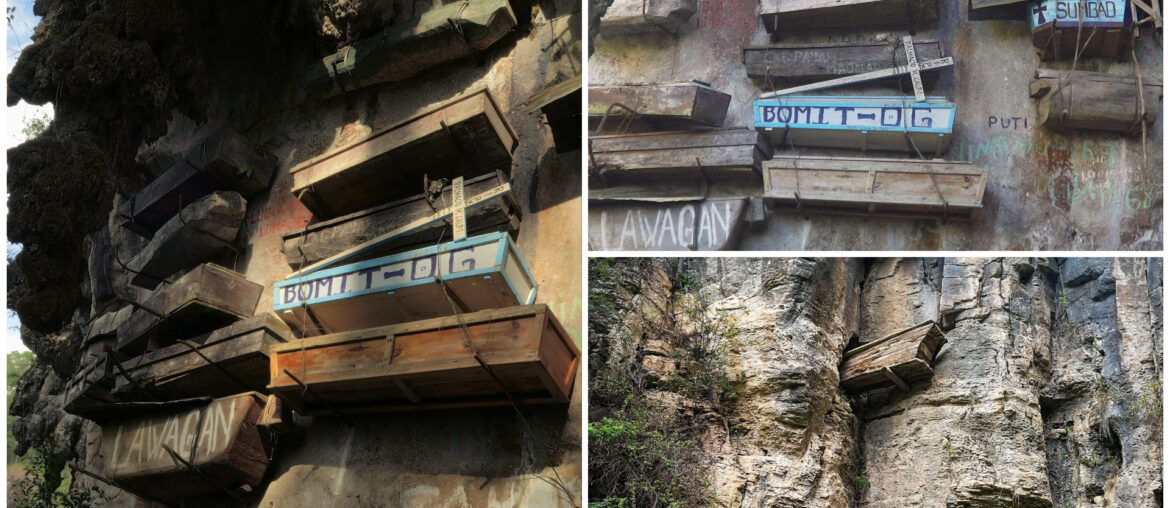Instead of going six feet under, they went six feet up.

WHY THIS TRADITION?
Hanging coffins is a unique funerary practice among the Kankanaey people of Sagada, Mountain Province in the Philippines. While their exact age is unknown, they are thought to be centuries old. These coffins are placed under natural overhangs or on cliff side beams, with the deceased positioned in a fetal pose. This positioning reflects a cultural belief that one should leave the world as they entered.
Hanging coffins are not the primary burial method for the Kankanaey; they are reserved for distinguished leaders who have performed significant acts during their lifetimes. The height of the coffins indicates the deceased social status, primarily among the male elders of the community.
While most burials involve interment in caves, hanging coffins are a mark of honor, with specific rituals (sangadil) performed before interment. These customs ensure that the spirits of the dead can protect the living.

PROTECTION BELIEFS
This burial tradition is based on several cultural beliefs. One key idea is that placing the bodies higher up brings them closer to ancestral spirits, enhancing their connection to the spiritual world.
Additionally, another reason is due to a practical concern. The Kankanaey people feared that burying the bodies underground could lead to them being disturbed by animals, such as dogs, or it could decay rapidly due to the moist soil. Therefore, they sought a safer place for the corpses.
Historically, another reason for the elevated burials was protection from headhunters. In the past, rival groups would seek to collect heads as trophies, so placing the dead up high on cliffs offered a safeguard against such threats. This practice reflects both spiritual beliefs and practical considerations in their burial customs.

The hanging coffins have become a tourist attraction, highlighting their cultural significance. Cut through the jungle and overgrowth of the Valley of Echoes to discover their mysteries.



Comments are closed.